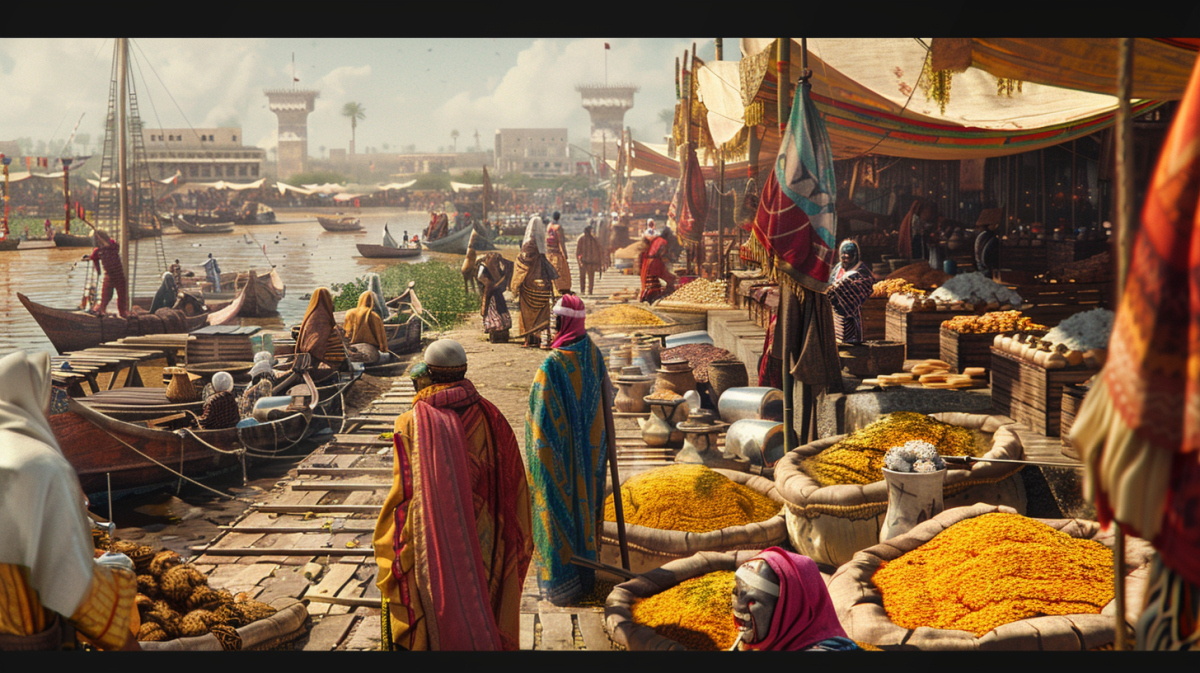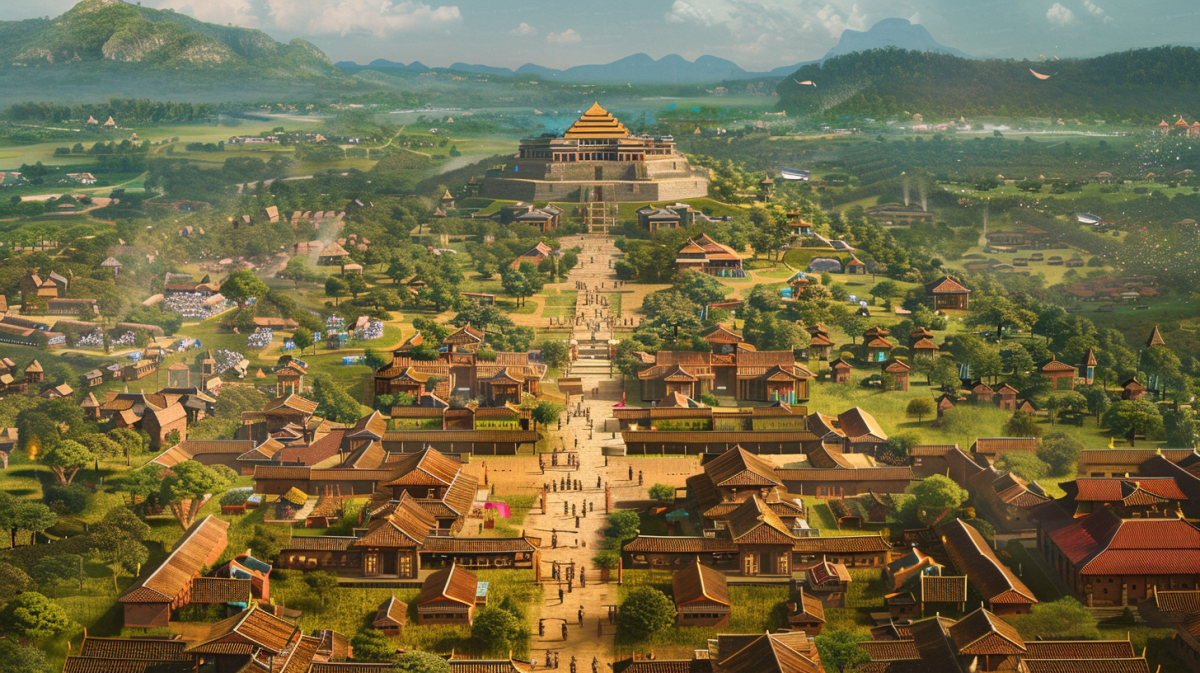Dhar Tichitt is an ancient site in Mauritania, occupied from 2000-500 BC. Recognized for its stone settlements, it’s one of the earliest examples of urbanization in the Saharan region. The inhabitants practised agriculture, notably millet cultivation, before migrating due to climate changes.

Embark on a journey back in time, tracing the origins of this remarkable site that came to light in the early 1910s, when the intrepid French Colonel Charles Roulet led an expedition during the colonial era. The very heart of Dhar Tichitt pulsates with history, breathing life into a bygone era.
For millennia, these cliffs served as a sanctuary for resilient farmers and nomadic pastoralists, their presence shaping the landscape from around 4500 BC to 2300 BC, encompassing an epoch of nearly 2500 years. Standing as a time capsule, Dhar Tichitt bears witness to the ancient echoes of West Africa’s earliest known settlements, a legacy etched into the very fabric of its surroundings.
Here, amidst the remnants of a once lush Saharan savannah, approximately 500 stone settlements adorned the land, each a testament to the resourcefulness of its inhabitants. These early settlers nurtured a delicate balance between their livelihoods, engaging in pastoralism, hunting, fishing, gathering wild grains, and cultivating the precious bulrush millet. Their footsteps echoed in harmony with the rhythm of nature, as they left their indelible mark on the shifting sands of time.

The resilient souls who called these settlements home believed to be the esteemed ancestors of the Soninke people, crafted a tapestry of life within the stone-walled compounds that dotted the plateau. A symphony of houses and granaries, adorned with winding streets, whispered tales of communal existence. Witness the grandeur of expansive livestock enclosures, rising with a sense of purpose beside these dwellings, while the guardians of the community stood tall in the form of massive circumvallation walls, a testament to collective endeavours that shaped the destiny of this ancient civilisation.
Dhar Tichitt Civilisation
This location holds the historical imprint of the Neolithic era, a remarkable period in Africa often termed the Pastoral Neolithic. This transformative era witnessed the passionate shift from a survivalist hunter-gatherer society to a more stable, productive agricultural and pastoralist lifestyle. Patrick Munson, with a keen sense of historical intuition, posited that around 4500 BC the Dhar Tichitt region was vibrant with pastoralist communities, possibly experiencing its zenith of cultural richness and population growth during this intriguing period. Munson further held a profound belief that the period of grandest occupation from 4500 to 4000 BC harmonised beautifully with the fertile, life-giving phase of the Mid-Holocene humid period.

Agriculture
The initial proof of grain domestication in the storied Dhar Tichitt region unfolded through the impressions left by grain on ancient pottery shards, discovered during Patrick Munson’s excavation. These imprints bore witness to the historic cultivation of millet (Pennisetum glaucum) within the region. Deeper exploration revealed that by 1100 BCE, at the very least, the crop was fully domesticated, yet the roots of such practice might lie far deeper in time.
Munson’s insightful analysis suggested that the local populace had likely embraced a sedentary lifestyle due to the gradual decline of rainfall over several centuries. With the advent of aridity, wild grains could no longer be consistently harvested. This necessity spurred people to establish settlements next to rare moisture havens – oases, and venture into the practice of agriculture. Yet, not all resources were domesticated, as wild grains and fruits, resilient to the dry season, were collected in lowlands to fortify an otherwise pastoralist diet. This seasonal variance in diet indicated that while millet served as a key crop nurtured during the rainy season, the wild food sources thrived relatively well on sandy soils, offering a secondary dietary cache.

Since the dawn of the 1990s, research probing these potsherd impressions has grown significantly more comprehensive. Modern dating techniques using accelerated mass spectrometry have recalculated the domestication of millet to roughly 1900 to 1700 BCE, synchronizing the birth of agriculture with the Early Tichitt period. Intriguingly, the Tichitt culture wasn’t alone in taming millet. Some estimates mark similar feats in neighbouring Sahelian regions around 2500 to 2000 BCE, and some even propose a genesis as early as the fourth millennium BCE. It appears that the domestication of grain in Dhar Tichitt was merely a chapter in a broader narrative sweeping across the Sahel. Additional evidence highlighting cultural shifts from the Pre-Tichitt to Early Tichitt periods infers a period of intensified millet farming around this epoch.
Pastoralism
Much of the archaeological findings linked with the Pre-Tichitt era paint a picture of a refreshingly uncomplicated and far-reaching pastoralist economy. This involved the herding of cows, sheep, and goats in harmony with the hunting of antelope and freshwater fish. Munson originally perceived the Pre-Tichitt epoch as dominated by nomadic herders with a total absence of agricultural advancements.
Contrary to this view, despite the scant evidence of cereal domestication during this phase, it’s now believed that pastoralism and millet agriculture likely coexisted for a considerable stretch before the dawn of the Early Tichitt period. Some interpretations propose an intriguing narrative – as the Tichitt culture made their grand entry into what is now known as Southeastern Mauritania, they had already forged a solid culture underpinned by agro-pastoralism.
Social Structure
Societies scattered across the Sahelian West African region are typically characterised by the arrangement into compounds, encapsulating a kinship group’s tangible possessions. Among archaeologists, the existence and roles of elites within the Dhar Tichitt have been a subject of vibrant debate. The minimal evidence of imported goods in the region has led some to perceive this as a testament to an exclusive, long-distance trading network, reserved solely for the society’s upper echelons. Conversely, some assert that such sparse evidence can’t conclusively reflect the socio-economic structure of Tichitt society.

Several indicators hint at socio-economic differentiation within households at the site. The colossal stone enclosures that have become emblematic of the site in the Classical Tichitt era are recognised as demarcations of social space, with different spaces within these compounds accommodating varying classes of workers. These settlements also seem to reveal the presence of layered hierarchies. Household compounds were distinguished by diverse types of grinding stones, likely utilised for distinct aspects of food processing and tool creation. Not all residential units possessed the same assortment of grinding stones, suggesting that different households might have concentrated on unique types of production.
Further, each household appears to have encompassed at least one male and one female member, with many compounds likely hosting a large family unit, apt for their agro-pastoral lifestyle. The congregation of funerary mounds is known to have taken place only in certain locales within the site, such as Dakhlet el Atrouss I. The entire settlement at Dhar Tichitt can be partitioned into four distinct levels, including hamlets, villages, district centres, and regional centres. It’s conjectured that each district centre was capable of overseeing up to 20 different hamlets. In most of the Classical compound clusters, expansive areas outside of the walled compounds, adjacent to the living quarters, are thought to have served as spaces for livestock or gardens.

Research into the site’s funerary mounds remains limited. Yet, the prominent presence of these tumuli suggests the site’s potential significance in cultural terms. Dhar Tichitt could possibly symbolise a ritualistic hub, given its extraordinary concentration of tumuli, unmatched by any other sites within the associated Tichitt culture. Intriguingly, the formidable stone walls at the Dhar Tichitt site appear to have been intended for spatial division, rather than as fortifications against external threats. Certain experts conjecture that Dhar Tichitt’s unique social structure hints at a heterarchical system, akin to Jenné-jeno. Furthermore, the surge in decorative diversity and pottery types as the culture transitioned into Dhar Tichitt might be connected to specialisation.
Ancestors of the Soninke People
Numerous archaeologists have posited a compelling link between the Dhar Tichitt and the overarching Middle Niger River Delta cultures, such as the illustrious Ghana Empire. Both archaeological and linguistic strands of evidence point to the Soninke people, associated with the Ghana Empire, as descendants arising from the vestiges of the Tichitt culture after its dramatic collapse. The bulk of this archaeological evidence has surfaced in the form of ceramics, remnants of cattle, and stonework found on the northern fringes of the known Middle Niger territories. The most ancient Tichitt assemblages identified in this region have been chronologically pinned to around 1300 BCE at the Saberi Faita site. Consequently, the presence of these archaeological vestiges hints at the Tichitt diaspora being intrinsically linked to the subsequent rise of Middle Niger cultures during the first millennium BCE.
The collapse of Dhar Tichhitt
The transition in climate, particularly the desertification of the Sahel, alongside the influence of nomadic tribes such as the Berbers, are viewed as credible triggers for the demise of the Tichitt culture. Munson proposed the theory that the Berbers made their dramatic entrance in the first millennium BCE, a hypothesis supported by local rock art. Fierce clashes with the Berbers might have played a part in the downfall of this society. Furthermore, echoes of Berber influences may linger in the material culture of the Late Tichitt period.

Sites like Dhar Nema reveal the abrupt emergence of metallurgy, a feature absent from earlier Tichitt cultural sites. It’s proposed that the Berbers might have introduced the art of metalworking into the region. However, as one expert notes, “the major challenge in verifying this theory lies in our limited understanding of Berber metallurgy, its technology, and its antiquity.” Berbers are believed to have displaced numerous original inhabitants of the region, triggering a slow migration into the northern Middle Niger River Valley.
Related Posts
Sources
“Tichitt Tradition in the West African Sahel.” Cambridge University Press. Accessed 11.06.23. https://www.cambridge.org/core/books/abs/cambridge-world-history/tichitt-tradition-in-the-west-african-sahel/FA8A6F2725008517F6ABD93007B96405.
“Archaeology and the Prehistoric Origins of the Ghana Empire.” JSTOR. Accessed 11.06.23. https://www.jstor.org/stable/182004.
“Dhar Tichitt.” Wikipedia. Accessed 11.06.23. https://en.wikipedia.org/wiki/Dhar_Tichitt.






